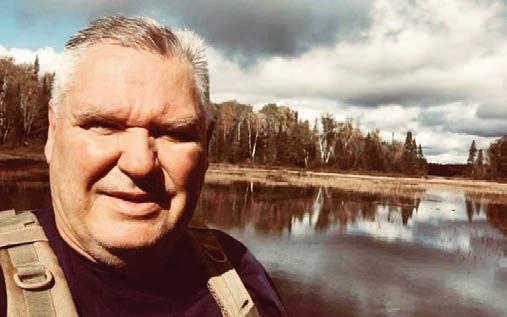
4 minute read
Q & A With Jeremy Benoit
Q&A WITH JEREMY BENOIT Belleville Senators Strength & Conditioning Coach
By Total Sports Staff
Advertisement
Jeremy Benoit has been in the Quinte area for only a few short years but his impact on local athletes has been significant. Working not only with the Belleville Senators, Jeremy has made a huge impression on athletes from the Wellington Dukes, Kingston IceWolves (PWHL) Quinte Red Devils and beyond.
Total Sports caught up with Jeremy for a quick Q &A session.
(TSQ) In the past hockey trainers focused on getting bigger/ stronger... Why is this a mistake? Benoit: I don’t think it’s necessarily a mistake, but I believe every player has his or her own individual skill set. Each athlete has a requisite for strength and size to utilize their skill set to the best of their abilities. These can be assessed through relevant literature ex. 1.5-body weight squat, coaches eye/ skill and scouts recommendations, using technology (Hawkins force plate etc.). Once they achieve these strength and mass metrics for performance, I would immediately look to other “buckets”, or areas of performance to fill. It then becomes a cyclical model of performance, continuously filling different buckets, including strength. Strength and mass provides an athlete with confidence among other physiological benefits to performance. I find strength and conditioning coaches as well as players unfortunately get stuck in a rabbit hole of adding strength without variety and proper development assessment. Strength is often what the athlete excels at, but not necessarily what they need at the time. Often, the coach will assess success in correlation with the player’s strength outcome, but this category alone does not solely define success.
(TSQ) Trend towards leaner faster but maximizing strength... power... why does this relate to hockey better than the old model.
Benoit: As I mentioned above, the important “buckets” of performance I view are: Wellness, Strength, Speed, Power, Rhythm, Athleticism and Performance Mobility. These can be broken down into many sub-categories. A well-rounded athlete needs to optimize all areas of performance in order to truly improve and find success, especially as they get older. With regards to hockey, I’m sure most coaches can relate to assessing their players in all of these “buckets” in one way or another. The game has emerged in the last 10 years as a fast paced skill focused game requiring more processing at high speeds. Our training in the development of young athletes has to reflect this evolution in the sport. (TSQ) You focus a lot on mobility, flexibility, why is this as important or more important than strength. Benoit: Investigating the mobility of an athlete, or lack thereof, in relation to the sport and position they play is very important as this bucket is sometimes forgotten about and is the missing piece to the players development. I personally believe the athlete has to gain experience, control and multiple ranges of motion in different positions, because the game puts you in compromising positions all the time. When their body has experienced these situations prior to trauma, the muscle and connective tissue will be more resilient to injury, and more comfortable getting out of these positions. Isometrics of different variety and mobility drills focusing on movement and control (Dynamic Neuromuscular Stabilization DNS, FRC) are tools I like to use to help improve performance mobility. Like anything it is one bucket of performance that needs to be filled.
(TSQ) What are mistakes many trainers of hockey players make? How can parents identify that the trainer they are using is not in step with today’s science?
Benoit: There are many roads to Rome; in other words, there are many different approaches to coaching. It is important that the certified strength and conditioning coach can identify your son or daughters short comings, while discussing and creating an action plan to help them develop in these areas. If they are able to do this then the athlete is in good hands.
(TSQ) Every body type is different, how do you identify weaknesses, and improve on those areas of weakness?
Benoit: Every athlete has a different physiological make up and unique skill set that allows them to excel at their sport. My job is to identify where they can improve and how. I always begin by assessing what “buckets” have been filled on their own or in their past development. By conducting movement assessments, wellness questionnaires, and by using a variety of technology, I can better assess what each athlete requires in order to improve in their sport.
(TSQ) Do you feel nutrition is underestimated by minor hockey parents and how important is this to the strides made in the gym?
Benoit: Wellness is a very important “bucket” of performance. Sleep, nutrition, hydration, and in some circumstances supplementation, are all included in the athletes health & wellness. Nutrition is similar to strength and conditioning in that it has many uneducated opinions surrounding it (quick fixes. diets, new tools), Ultimately, the basics done well under the guidance of an educated nutritionist will yield the best results. Busy schedules of young athletes make it difficult for them to fuel their bodies properly and is often a missing piece of their development.
A Ferrari with a gas tank running on empty still won’t get you very far. This means you can work very hard in the gym and do everything correctly, but if your wellness bucket isn’t being filled daily, you will still struggle to find success in the gym.










